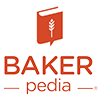
Pan Lubrication
What is Pan Lubrication?
Pan lubrication is a critical step in high-speed bakeries processing thousands of loaves per hour. It allows the baked goods to be easily depanned (released from pan) as soon as they leave the oven.
At this point, finished product temperature is about 200˚F (93˚C) and bread’s top crust and side walls are still rigid as no moisture migration has taken place yet.
如何it work?
Pan lubrication is the process in which an edible grease or oil is sprayed through nozzles onto the inside walls of a pan beforedough pieces从Moulder中掉了下来。该过程通常是通过使用自动化锅油机进行的。
泛油机的相关考虑因素
- Pan oilers need to be adjusted to deliver a preset amount of lubricant inside the pan in the very small window of time they have, depending on pan conveyor speed. Intermittent spraying reduces oil waste and minimizes line cleanup.
- Such equipment should be able to work consistently. It should spray an exact and precise amount of lubricant, with a normal and permitted deviation between oil applications.
- 油涂层期间的雾化现象是不希望的,因为它导致润滑剂废物和油分布差。
- Spray nozzles should be regularly serviced and cleaned according to the maintenance and cleaning programs. Poorly maintained nozzles can get clogged and become a contamination source for products.
- Nozzles can be arranged in hygienically designed manifolds for a variety of conveyor widths and pan designs.
- While not in use, oil should be stored at ambient temperature (not above 86°F or 30°C) and below 60% relative humidity.
- Pan oilers should be included in production startup checklists. Production managers and supervisors should always check that pan oiling machines are running smoothly as consequences of improperly lubricated pans can be considerable.
- Food-grade lubricants, those that fall under NSF classification should not be used for pan lubrication. H1 Lubricants are used for reducing friction, especially in mechanical parts of food machinery (e.g. bearings and shafts). These lubricants are to be used where the possibility of contact with food exists (i.e. incidental food contact).1
Application
在实践中,在平底锅中施用过多或太少的润滑剂的影响变化。关键是一种情景是不可取的。
过度润滑平底锅的影响:
- Excess oil accumulates in the bottom of pan
- Spots on product crust become visible
- Excessive use of lubricant
- 过度烘焙的产品侧壁
- 清洁平底锅可能需要更长时间
润滑平台润滑的影响:
- Product crust sticks to pan’s interior surfaces
- Generation of waste at deppanner as damaged product cannot be reworked
- Under-baked product sidewalls
Pan glazing and silicone coating can be used as alternatives to lubrication. Most pans in high-speed bakeries are coated with a silicon solution that greatly reduces, and in some cases, eliminates pan oiling or in-house lubrication.
Pans are treated either by spraying with, or immersion in, a silicone solution and then cured by holding at elevated temperatures for several hours. The resultant coating facilitates deppaning of loaves. The coating applied usually lasts for more than 400 baking cycles before reglazing of pans is required.
The type of grease oroilused for pan oilers is also important. Its selection is based on their physical properties, chemical composition and baking performance (stability to oven settings).
PAN润滑剂的一些性质和特征包括
- Usually made from a blend of soy and vegetable oil
- Highly saturated (high content of saturated fatty acids)
- High smoke point (key for high temperature baking)
- 对氧化酸酸率相对稳定
- 低碘值
- Liquid and whitish appearance
References
- 莫拉盖斯De La Cruz加西亚,C。桑切斯,G。,没有rdqvist, D. “Food Contact Materials.” Food Safety Management. A Practical Guide for the Food Industry, Academic Press, Elsevier Inc., pp. 403–405.

我试图用椰子油和液体向日葵卵磷脂制作自己的泛释放油。但即使在60°C上将它们融入良好后,两者都在一两天内分开。他们是一种让他们在同质状态下保持良好的方法。
嗨fazal,很棒的问题。您介意在我们的论坛中发布,所以我们的团队和其他人可以参加和贡献吗?//www.bzysgjg.cn/forums/谢谢!
Hi Fazal- I am responding to your blog about pan oil. Did you get your issue resolved?
I’m looking something to clean bread pans
Hi Asif, that’s a great question! If you post it in our forum, our team and community may be able to help you://www.bzysgjg.cn/forums/